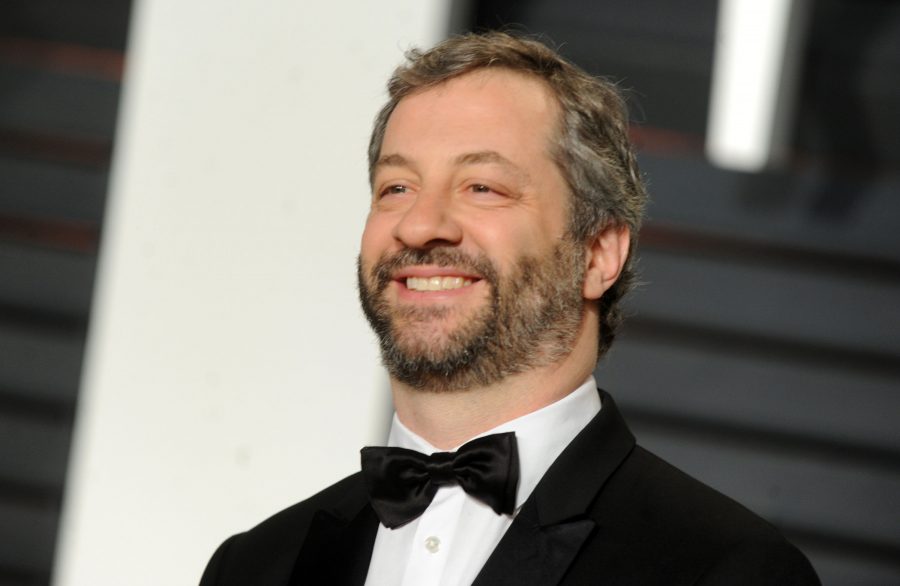Netflix original, “Love” captures essence of modern relationships
Judd Apatow attends the Vanity Fair Oscar Party at Wallis Annenberg Center for the Performing Arts on February 22, 2015.
Mar 26, 2017
The moment I saw Netflix had come out with a new, original, quirky, Judd Apatow-produced show titled “Love,” I knew I had to watch it. After burning through the first season, I found myself with the all-too-familiar hangover that inevitably follows a Netflix binge. I had an empty place inside that could only be filled by more “Love” (not as dramatic as it sounds, I promise).
When season two finally rolled around, it offered up something different yet also more of the same. “Love” continued to provide realness to the viewer, whether they wanted it or not. However, the single largest flaw in season two, by far, is its continued lack of diversity. Although I’ll admit I was a bit concerned that a show of this nature wouldn’t have much holding power past its first season, I was pleasantly surprised to watch season two and see the show’s continued success.
Season two picks up where the first season left off. Mickey and Gus are standing outside the same Los Angeles gas station where the two initially crossed paths in the pilot episode. Mickey tells Gus about her struggles with addiction, that she needs some time apart and the couple should consider getting coffee in a year or so. Gus responds with a meaningful kiss, and now we are officially in season two territory.
“Love” grapples with a variety of different topics such as spending time with parents, substance abuse and what it means to be a ‘successful’ millennial, but most importantly, it continues to take a long, hard look at love in the modern age.
The second season of “Love” follows Mickey in her continued visits to Sex and Love Addicts Anonymous meetings as she continues trying to stay sober in more ways than one. Gus, on the other hand, focuses on giving everything to help Mickey battle her addictions. Yet, actually understanding how to support someone, especially a significant other, proves to be a much more difficult feat than Gus originally anticipated. And with long distance added into the equation, season two is off and running in no time.
Get The Daily Illini in your inbox!
Mickey and Gus’ relationship is likely all too relatable to the viewer. For example, Mickey spends hours, nearly an entire day, deciding whether or not to send a text message to Gus. There is an entire scene where the only communication between the couple is via text messaging.
Additionally, Gus finds himself trying his best to help Mickey or those around him. Too often though he barely misses the mark and accidentally makes the situation worse. Mickey, on the other hand, desperately wants a wholesome and healthy relationship with Gus. She allows her brief moments of indecision and weakness to wreak havoc on the peaceful life with Gus that she so ardently wants. Unlike nearly every other relationship seen on TV, “Love” has one comprised of two real people who have actual human flaws.
Unfortunately, while “Love” does showcase a nearly unbeatable relationship as far as realism goes, every character in the show is exactly the same. Okay, maybe not exactly the same. The show is set in present-day Los Angeles, revolves around very modern themes, stars a cast of millennials and nearly every single character is white and heterosexual (as far as the viewer can tell). The last time I was in Los Angeles, it was more diverse than this show depicts. This is where “Love” completely misses the mark. Sure, there’s the token black character in a few scenes. A handful of minor characters are played by minorities, but seriously, this is a show about modern day love, yet the characters are all straight and white?
If there’s anything our country has hopefully learned over the past decade, it is that love and people are not only straight and white. For a seemingly modern, innovative show to have such a homogenous cast is beyond disappointing. That is not what love looks like. That is not what love is.
Apatow, Rust and Arfin created a television show that looks at the ups and downs, and the struggles and triumphs of managing an actual, real-life relationship in the 21st century. Other shows and movies offer seemingly endless recreations of the same white, heterosexual couples that no realistic person can relate to. While “Love” does, like far too many other Hollywood productions, miss the mark for diversity, it offers a light into a modern relationship that the viewer can resonate with.






